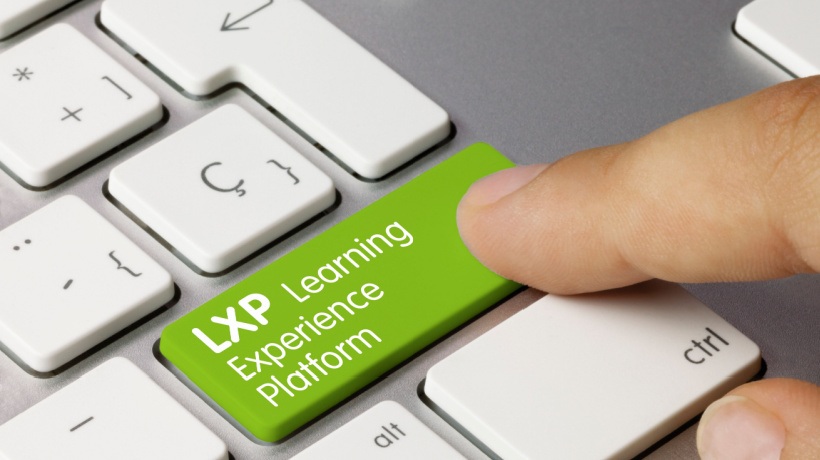Can Learning Experience Platforms Replace LMSs?
Learning Experience Platforms (LXPs) are typically AI-powered eLearning solutions that change the way employees train on the job by focusing on their individual needs instead of just the Learning and Development team's requirements. It's an innovative way for companies to concentrate on their employees' professional development and give them greater control over their learning path. Read on to find out more about LXPs and decide if they fit your company's needs more effectively than LMSs.
6 Top Features Of An LXP
1. Personalization
Learning Experience Platforms use Artificial Intelligence (AI) to individualize the learning path of every user. This includes everything from content to its delivery. The first step in this process is creating users' profiles that include some personal information and their job roles. Then, the platform uses the profiles to curate relevant learning content and design personalized learning pathways. Personalization also involves the platform adapting to the users' performance and giving them meaningful feedback.
2. Content Assembling
An LXP collects learning content from various sources and assembles it seamlessly into modules. This content can be videos, podcasts, articles, and eBooks, among others. This content assemblage is helpful because it provides users with a wide range of resources to find the ones that suit them better.
3. Social Learning Support
Users can use the platform to connect with peers and collaborate during their learning experience. There are features like discussion forums and chat rooms, but there's also the possibility of integrating the platform with your preferred social medium. This way, learners share their ideas and concerns and help each other navigate potential challenges.
4. Gamification
Ideally, you should look for an LXP with gamification elements, like badges, points, and leaderboards to make the learning experience more engaging. These elements motivate learners since they will receive awards for completing certain tasks. Plus, seeing the scores and achievements of their peers on leaderboards will encourage them to perform better.
5. Mobile Learning Support
When choosing an LXP, make sure that it's mobile-compatible so that the learners can access the content from their preferred devices. This will allow them to learn from everywhere, making the process flexible and convenient. The platform will also optimize the content so that it's mobile-friendly.
6. Analytics
Users are able to view analytics on their performance and track their progress through the platform. They get insights into time spent on lessons, how quickly they complete tasks, engagement levels, and log-in information. This way, learners can see the areas they need to improve and make changes in their learning behavior.
Comparing LXPs And LMSs
Content Delivery
LMS solutions usually contain more organized content that's delivered serially over a certain period. They're focused on a specific curriculum that's expected to be completed in a certain order. On the contrary, Learning Experience Platforms typically enable users to organize the content however they want based on their personal preferences and goals. When it comes to content interactivity, both LMSs and LXPs give learners the ability to engage with interactive content, like quizzes and simulations.
Reporting
Both platforms provide users with built-in reports, like dashboards, graphs, or diagrams concerning their performance. LXPs, though, allow instructors to create their own dashboards according to their needs. For example, they can create specific reports that only display engagement levels and competition rates or any other combination of metrics.
User Interface
LMSs often emphasize functionality, and you will find menus and tabs with easy navigation. The content is well organized in categories according to the curriculum and learning path, which helps learners stay focused. On the other hand, LXPs allow users to change menus and explore the platform to suit their needs, giving them opportunities to find new content.
Ease Of Implementation
Implementing an LMS may be a bit more straightforward, as it involves setting up the program, uploading content, creating administrators and user profiles, and adjusting the UI. They usually come with support resources to help professionals with the process, too. Some of them also have dedicated support teams. Some LXPs might have a more complicated implementation procedure because they allow users to customize the platform however they like, giving them endless options for configuration. Support is also customizable according to the platform's added features. As far as integration with other programs is concerned, both platforms offer this feature.
Best Uses For An LXP
If you plan to create informal courses, then LXPs are the perfect solution. You can use them for peer-to-peer learning, where employees will help each other share their knowledge or on-the-job learning, allowing employees to invest some hours of their workday in their training. They're also ideal for soft skills training, such as communication skills, as they're an interactive platform that encourages the development of those abilities.
Best Uses For An LMS
LMSs can provide more structured training, which makes them the right fit for mandatory training and more linear approaches. Specifically, they can offer certification programs, which require learners to complete courses in order to get a certification. Similarly, if you want to train your IT team, these systems are just right for software training through simulations or assessments. You can also deliver compliance training, such as safety and data privacy courses.
Conclusion
It's important to note that some systems veer off from the norm. For instance, you may find an LMS that's equipped with many of the LXP features listed above. Ultimately, Learning Experience Platforms and Learning Management Systems can coexist in the learning space. The choice greatly depends on the users' and organization's needs, as well as the overall learning goals.









